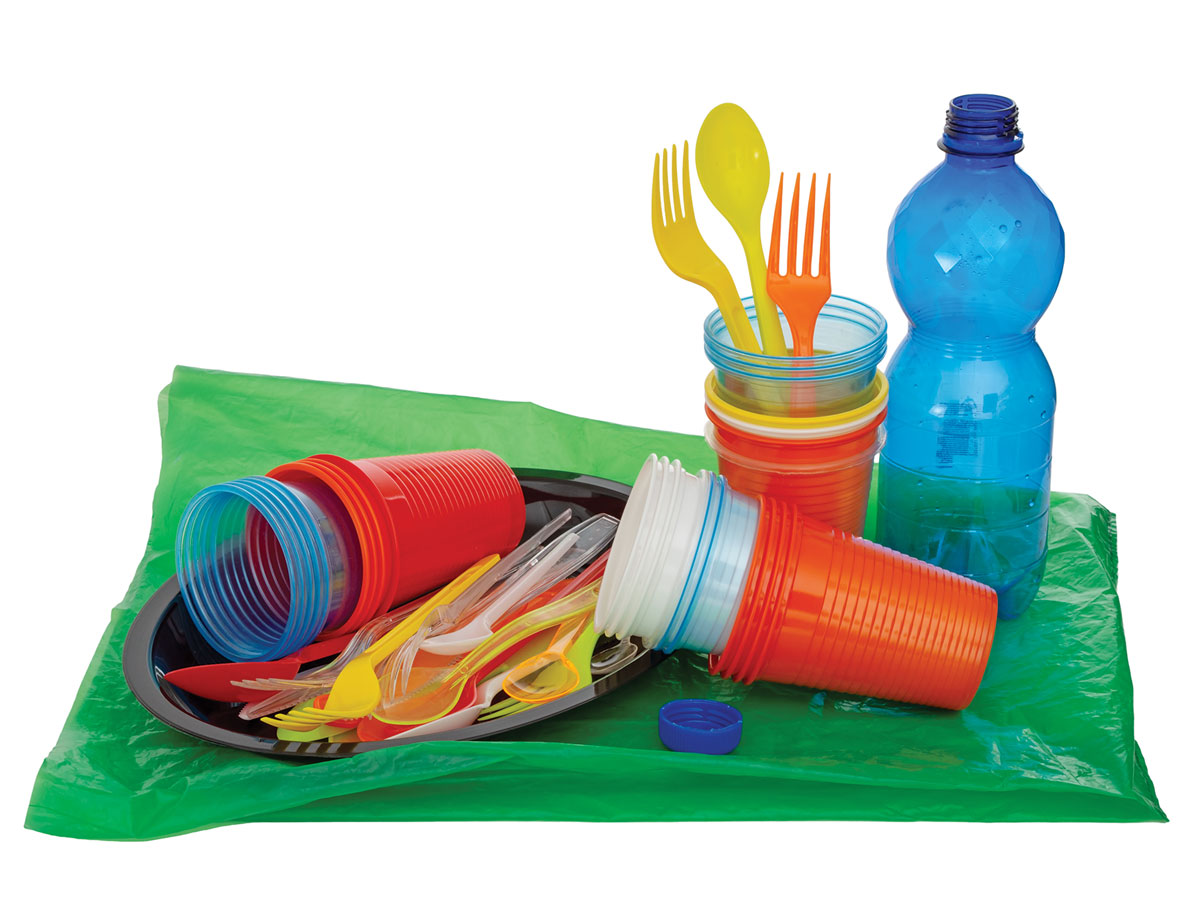The new law bans nine plastic products, such as single-use straws and cutlery, often found littering the beaches of Europe.
There has been plenty of discussion about how legislation – or lack thereof – can hinder the emergence and widespread use of solutions that can solve some of the most difficult challenges of our times. With enough resources, technology and innovation can be developed fast, but legislation often falls behind and it can take years for lawmakers to catch up.
By this July 3, the member states of the EU should have implemented the new Directive on Single-Use Plastics that bans nine plastic products, such as single-use straws and cutlery, often found littering the beaches of Europe. The aim is certainly noble: to prevent and reduce the impact of these plastic products on the environment and on human health.
The directive is also meant to serve as a step towards a circular economy with innovative and sustainable business models, products and materials – all geared towards more efficient use of our planet’s limited resources, so that we can protect and maintain our world for future generations.
Sadly, due to the way the Directive defines plastics, it can prove to be a difficult obstacle to innovative, sustainable solutions aimed at saving the world from plastic waste.
The directive defines all synthetic polymers (e.g. fossil-based polymers) and all chemically modified natural polymers as plastics, so that this definition now also includes bio-based biodegradable and compostable plastics products – even though many of those products could help us fight plastic pollution by offering effective solutions.
In fact, the definition in the law is so broad that it technically includes materials that can be even found in fried eggs as during heating egg’s polymers are chemically modified. They can also be found in many kinds of ketchup and ice creams as they contain a food additive called carboxymethyl cellulose.
All products containing these polymers (even tiny amounts) fall in the scope of the directive and no minimum threshold is given. And yet these materials are safe for people and the environment, and they leave no permanent microplastics behind.
Everyone knows we need to tackle the plastic crisis. According to World Economic Forum, the production of plastics has exploded over five decades from 15 million tons in 1964 to 311 million tons in 2014, and the amount is expected to double by 2050.
Meanwhile, according to Material Economics, it was reported in 2018 that the EU’s recycling rate for plastics packaging is 40%, but, according to research, the effective recycling rate is just 10–15%.
While plastic waste has been a great concern for decades and measures have been taken to make recycling easier, there’s also another threat. Microplastics have emerged as a significant issue during the last 10 years or so. As plastic products break down, they release microplastics – small plastic particles of less than 5mm in at least one dimension – that end up in nature, eventually accumulating in animal and human bodies. In fact, they release plastic particles already in use; for instance, when people open plastic containers.
According to an analysis commissioned by WWF, we could be ingesting around 5 grams of plastic every week. Microplastics have become so prevalent that plastic particles are being carried by the wind – and once they’re airborne, little can be done to stop them. They are officially part of the air we breathe.
We’ve all seen the pictures and news of whales and birds washing up on beaches, their stomachs filled with plastic items, such as bags and different kinds of packaging. Microplastic waste is more difficult to visualize, but we know from research that microplastics have already permeated our world. At the moment, very little research exists on their long-term impacts.
Meanwhile, the EU’s new directive does not even address the critical issue of microplastics. Banning synthetic polymers and chemically modified natural polymers does nothing to curb the spread of microplastics into nature, and animal and human bodies.
I’m concerned that due to the broad definition of plastics, the directive will not effectively meet its objectives to promote new sustainable material innovations. The broad definition of plastics may steer future policies in the wrong direction and close the door on effective and proven ways of tackling plastic pollution. The problem will repeat itself if the wide definition for plastics in the directive is adopted to other new regulations.
In fact, the same problems described here in relation to the new law can also be seen in connection with the review process of the Packaging and Packaging Waste Directive (PPWD) within the EU. Unless the individual member states do not step up and fight for these sustainable materials offering immediate help in fighting plastic pollution, we might face a similar calamity in connection with the PPWD as we have now with the latest directive on single-use plastics.
I’m not alone with these concerns. According to FinnCERES, a Finnish competence center focusing on the area of materials bioeconomy, the definition of plastic in the directive on single-use plastics means that we are at risk of losing the possibility of using bio-based materials for packaging and textiles and closing doors for innovation that could contribute to solving the most pressing environmental issues of our times.
At the moment, a reform of Extended Producer Responsibility is under development in several EU countries. Many member states are considering introducing specific plastic packaging taxes.
In addition, I am worried that there will be an increasing amount of legislation that does not recognize plant-based materials that do not leave permanent microplastics behind, but groups them together with traditional plastics. This would not only limit innovation, but also slow down the fight against plastic pollution.
Let us hope that this definition of plastics is only a temporary setback. I would like to see a new category for materials that do not leave permanent microplastics behind. However, the planned revision of the EU’s directive on single-use plastics in 2027 is too late. Six years is a long time to be held back. Nature and innovative solutions need support today.
This story first appeared on Sustainability Times
South Africa Today
© 2021 Sustainability Times.
This article is licensed under a Creative Commons Attribution-ShareAlike 4.0 SA International License.











